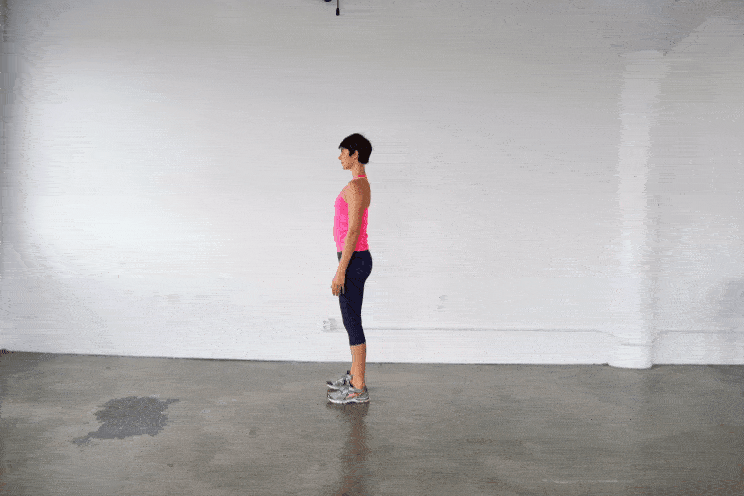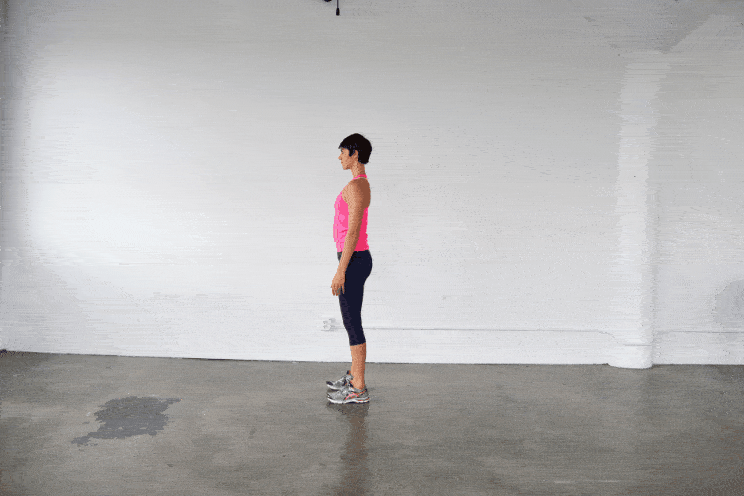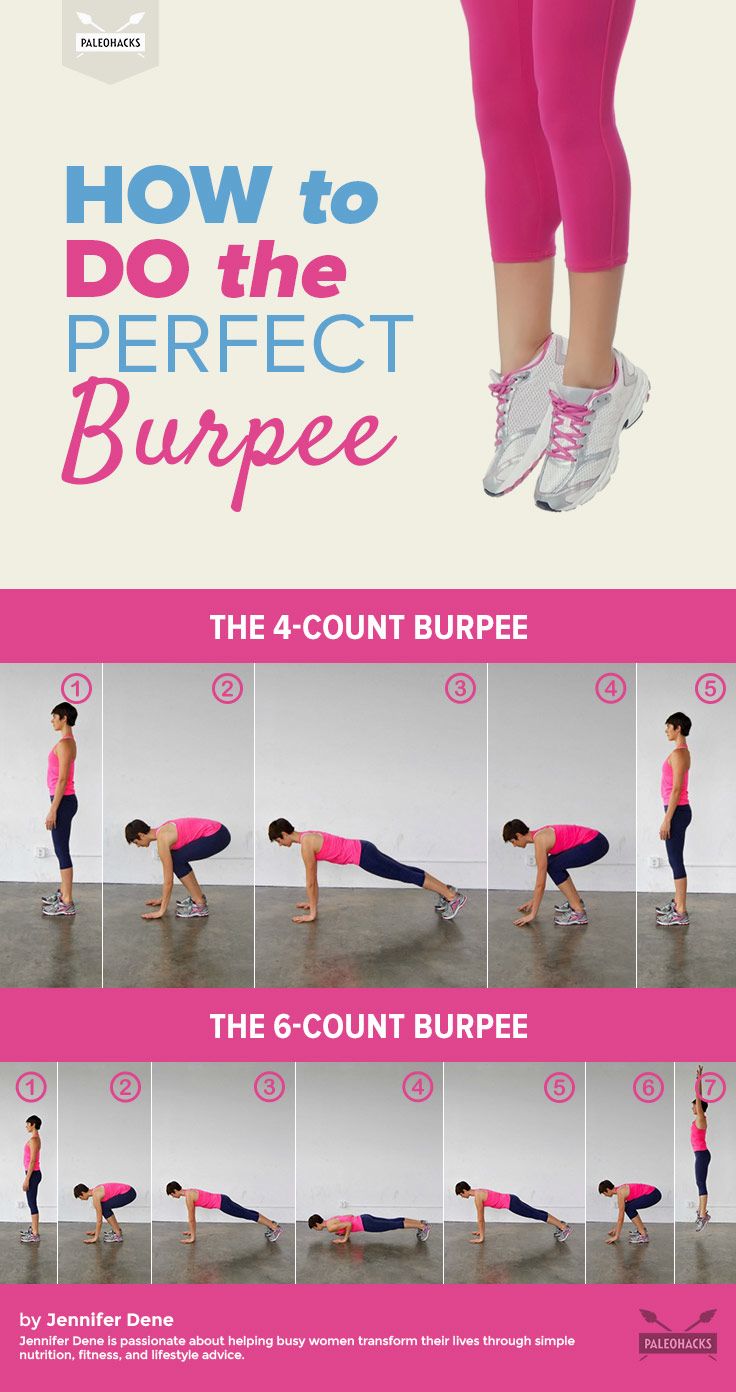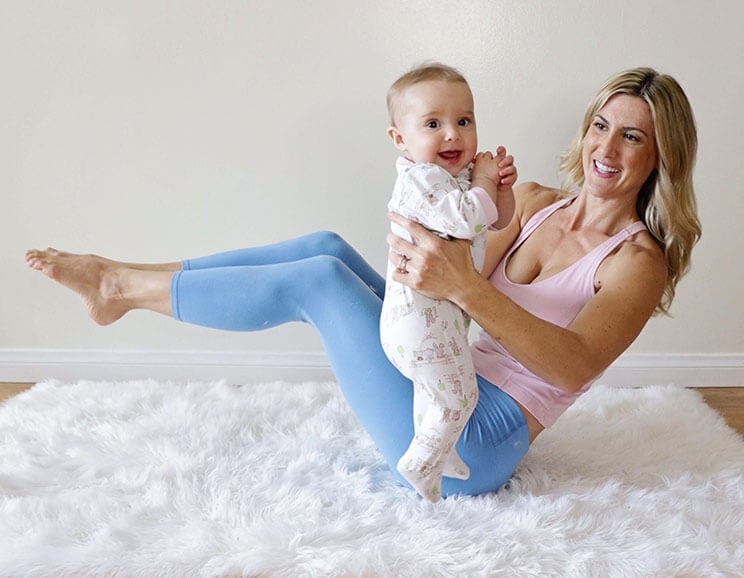With so many different steps performed at a fast rate, burpees are very easy to do incorrectly. Here, we’ll teach you how to do the perfect burpee — every single time.
What Is a Burpee?
The burpee is a full-body exercise that builds muscle and increases cardiovascular fitness. The original four-count-four-repetition movement was developed in 1939 by Royal H. Burpee, who used it to administer fitness tests at Columbia University. Since then it has increased in popularity (and challenge) thanks to boot camps, CrossFit and social media fitness challenges.
Looking for an easy way to get started working out?
Grab our FREE Beginners Workout Guide - 3 Weeks To Tighter Abs, Sculpted Arms, And Toned Legs, by clicking here!
These days the burpee includes six movements: a squat, a jump, a push-up, a jump, a squat, and an explosive jump to finish. It is one of the most challenging and effective bodyweight exercises.
Burpee Benefits
- They work your entire body
- They strengthen the core, arms, shoulders, legs, and back
- They burn a ton of calories (and body fat)
- They improve cardiovascular fitness
- You can do them anywhere
- They boost your endurance
- They can be modified to suit your fitness level
Common Burpee Mistakes
The burpee is only effective (and safe) when performed correctly. Here are five common mistakes to avoid.
Arching the back. Keep your torso in perfect plank position as you lower your body to the floor and when you press back up out of the burpee. Often people arch the spine, where the chest is lifted but the stomach is on the floor, which can lead to back and elbow strain. Keep your abdominals engaged and modify by dropping your knees if needed.
Skipping range of motion. What makes the burpee effective is a combination of speed, range of motion and explosive power. Squat deeply, lower the entire torso to the floor (chest, belly and pelvis), and open the hip crease all the way at the top of the jump.
Doing too many reps. The 100-burpee challenge is all well and good, but it’s also likely that your form will degrade as your repetitions increase. Slow the move down to make it a bit easier, and prioritize form over repetitions until you’re really comfortable with the mechanics of the movement.
Losing the plank. It’s easy to forget that the plank position is fundamental to the burpee movement. Keep the shoulders over the wrists when jumping the feet in and out — don’t let them move forward and back.
Not taking a regression. To burn a high number of calories in a burpee workout, you have to move quickly – speed and explosiveness send the heart rate sky-high, and can boost the metabolism for the rest of the day. If the push-up, or ending jump, are slowing you down, simply omit them and take one of the regressions below.
How to Modify Your Burpee
Here are tips on how to modify your burpee. Regressions will make them easier, while progressions will give you more of a challenge.
Regressions:
- Step back into plank position, rather than jumping
- Eliminate the push-up
- Stand up at the top, rather than jumping
- Elevate your hands by placing them on a box or chair
Progressions:
- Turn your final jump into a tuck jump
- Jump your feet onto an elevated platform during the push-up phase
- Improve fluidity of movement, never starting or stopping
How to Warm-up

The Beginner’s Guide to Burpees
Now that you know what to do (and not do) when it comes to burpees, here’s a schedule to get you started:
Week One: Start with a full mobility workout before completing four sets of the basic four-part burpee (omit the push-up and final jump). Aim for 6-8 burpees per set, as quickly as you can. Rest for 60 seconds between sets. Repeat this series three times this week.
Week Two: Repeat the sequence from Week One, increasing the repetitions to 10-15 burpees per set.
Week Three: Start with a full mobility workout before completing four sets of the six-part burpee (adding the push-up and the final jump). Aim for 4-6 burpees per set, as quickly as you can with correct form. Rest for 60-90 seconds between sets. Repeat this series three times this week.
Week Four: Repeat the sequence from Week Three, increasing the repetitions to 8-10 burpees per set. Rest for 90 seconds between sets.
The 4-Count Burpee
Start by standing with feet together. Lower into a deep squat position to bring your hands down to the floor. Jump your legs backwards into a full plank position on your hands. Jump your feet back into your low squat position and stand up reaching your hands overhead.
The 6-Count Burpee
Start by standing with feet together. Crouch down and place your hands on the floor. Swiftly jump the legs back and bend your arms so you are in a lower push-up position. Press back up into full plank, quickly bring your feet back under you, and then jump as high as you can, reaching the hands overhead and landing back in the squat position.
(Your Next Workout: An Easy Guide to Tabata + a Metabolism-Boosting Workout)







 17 Creative Ways to Recycle Used Coffee Grounds
17 Creative Ways to Recycle Used Coffee Grounds








Show Comments